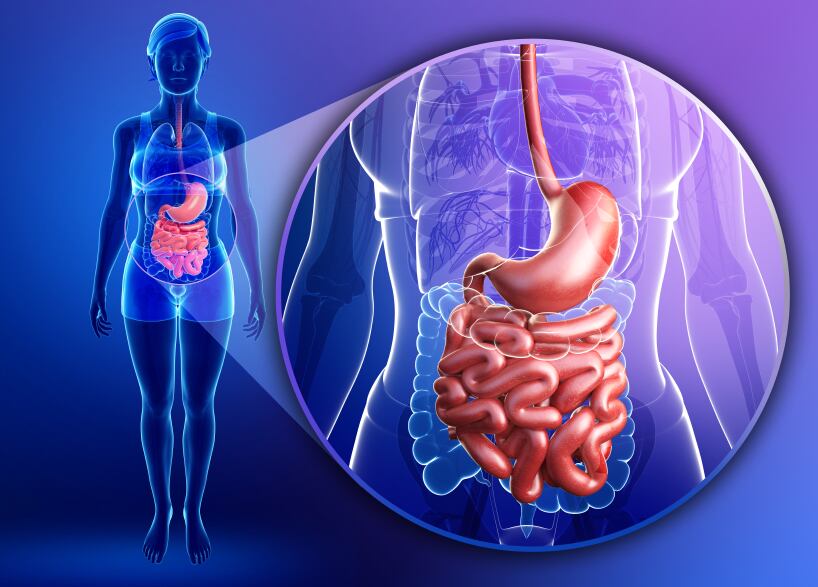Discussing prebiotics in the American Society for Nutrition’s Advances in Nutrition journal, the researchers said: “It seems of immediate benefit to all stakeholders involved to focus on specific beneficial effects of fermentable dietary fibres without necessarily trying to show that increased numbers of gastrointestinal microorganisms are a marker for a beneficial physiologic effect.”
The researchers from the Leuven Food Science and Nutrition Research Centre (LFoRCe) in Belgium, the Swedish University of Agricultural Sciences and Purdue University in the US said proving these endpoints could pave the way for successful EU health claim applications.
This in turn could help bridge the “so-called fibre gap” - meaning the difference between the daily fibre intakes recommended and that actually consumed.

Jan Delcour, professor at the University of Leuve’s faculty of bioscience engineering and chair of the LFoRCe, told us the European Food Safety Authority (EFSA) had been quite clear on what it looked for in prebiotic claim dossiers.
In the past EFSA has accepted that submitted studies showed food constituents increased gastro-intestinal microbiota, but what applicants had failed to establish was that such a change would result in a beneficial physiological effect.
“I have always publicly said that if I were a member of the [EFSA] panel with the rules of the game that they have, these people could do nothing but reject all these requests,” Delcour said.
“I think the process has been fair, to be quite frank.”
One of the most prominent functional changes induced by prebiotics or other fermentable dietary fibres is an increased production of short-chain fatty acids (SCFAs).
SCFAs have been shown to regulate energy homeostasis and glucose metabolism and to affect the immune system by regulating the release of cytokines and by inducing regulatory T cells in the colon.
However Delcour and his colleagues said: “[T]he mere demonstration of functional changes in the microbial ecosystem—such as fibre-induced increases in SCFA production—does not suffice any more than does the demonstration of compositional changes—such as increases in bifidobacteria—for allowing regulatory bodies to grant health claims. What is required is the demonstration of changes in relevant hard endpoints.”
Most mechanisms like glucose and lipid mechanism had been explored in animal or in vitro models, and showing human colonic SCFA production remained problematic due to the inaccessibility of the colon and the way in which SCFAs are absorbed and metabolism in the body.
The researchers said stable isotope technology could be one possible – albeit costly – way of learning more about this metabolism in humans.
From microbial composition to microbial metabolism
This technology essentially allows researchers to ‘label’ an ingredient via its different atomic mass, meaning they can safely track and quantify the ingredient's journey through the human body.
This gave an indication of not just how much SCFA had been excreted, but how much had been metabolised, co-author Professor Kristin Verbeke of the University of Leuve’s faculty of medicine told us.
This could help fill in key knowledge gaps.
“The experimental mechanistic studies [in animals and in vitro] are very promising and indicate that these SCFAs that are produced by fermentation in the colon may really act as the mediators of many health benefits. But in humans we still have to demonstrate that they are the mediators.”
Prebiotics, and indeed nutrition research more broadly, was just one application for the technology however. Other applications ranged from tracking doping in sport to tracking migration of fish.

The technology itself was not new, but its application to prebiotics was still in its relative infancy, she said.
This month researchers from New Zealand published results of their study of stable-isotope 13C labelled and non-labelled inulin catabolism by the gut microbiota in a healthy rat model.
“Inulin influenced caecal microbial glycosidase activity, increased colon crypt depth, and decreased the faecal output and polysaccharide content compared to the cellulose diet. In summary, the presence of inulin in the diet positively influenced large bowel microbial fermentation,” they concluded.
It’s no coincidence the technology remains something of a niche perhaps, considering its cost.
One Wageningen-based company, IsoLife, charges between €1680 and €5625 for just 5 g of the enriched ‘labelled’ wheat, for example.
The technology to measure the results was also expensive, Verbeke said.
Yet with or without isotope technology, it’s no secret health claim applications are costly.
Speaking with NutraIngredients this month about its rejected health claim for short-chain fructooligosaccharides (scFOS) from sucrose and the maintenance of normal defecation, French ingredient firm Tereos Syral estimated a successful claim could cost a company between one to two million euros at least.
Closing the fibre gap
Verbeke said increased research on prebiotic fibres was vital given the rise in obesity.
In the paper the researchers also highlighted potential public health implications.
"The possibility of showing benefits in terms of health related endpoints of different fermentable fibers that leads to the granting of specific health claims would be extremely valuable in bridging the so-called fiber gap —that is, the considerable difference between the recommended and actual fiber intake by the average consumer—as well as in promoting specific health outcomes that are generally recognised

by the scientific community," they wrote.
EFSA considers a daily intake of 25 g dietary fibre sufficient for normal bowel movements and notes that intakes above this are associated with health benefits like reduced risk of coronary artery disease and type 2 diabetes and improved weight maintenance.
Meanwhile in a report last year the UK government’s Scientific Advisory Committee on Nutrition (SACN) upped its recommended fibre intake from around 23-24 g to 30 g per day for adults.
However it acknowledged that actual adult intakes were much lower at 18 g.
Despite this, research firm Mintel found the importance of fibre was not lost on consumers.
Writing in a 2015 report on attitudes to health eating, Jodie Minotto, Mintel global food trends analyst, said: "Fibre is an essential nutrient that forms part of a healthy diet.This is well-recognised by UK consumers, with 51% looking to buy food that is high in fibre."
Probiota 2016 in Amsterdam, February 2-4

From zombie probiotics to the future of microbiome science; an EFSA exclusive to global hotspot market wraps; infants and the aged; case studies; latest research and formulations and more Probiota 2016 is a knowledge store you probably shouldn’t miss.
Click here for more information.
